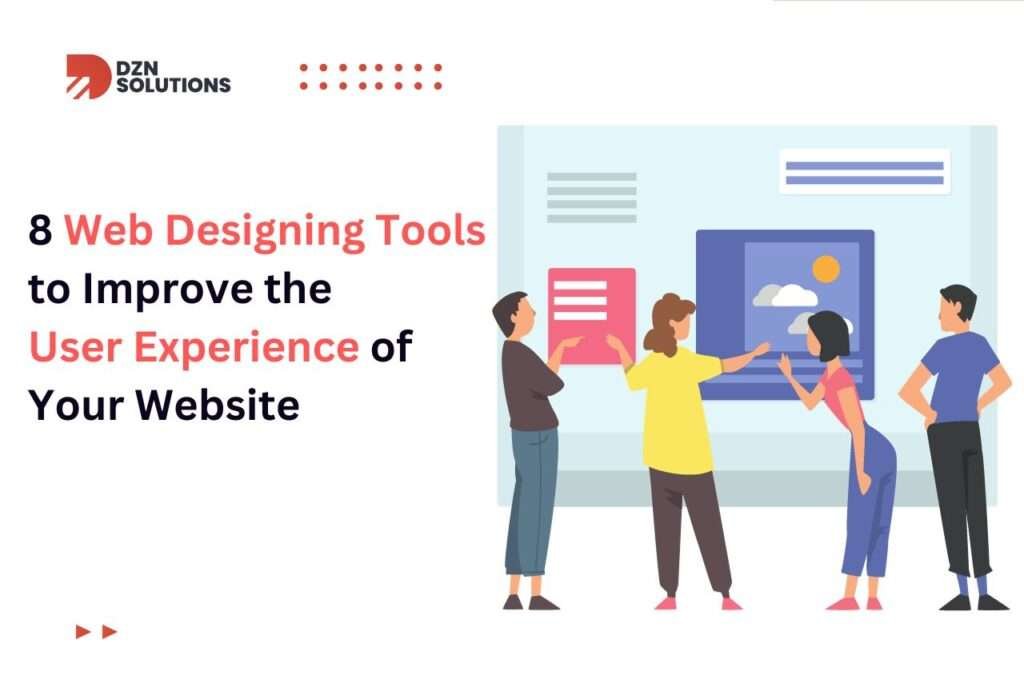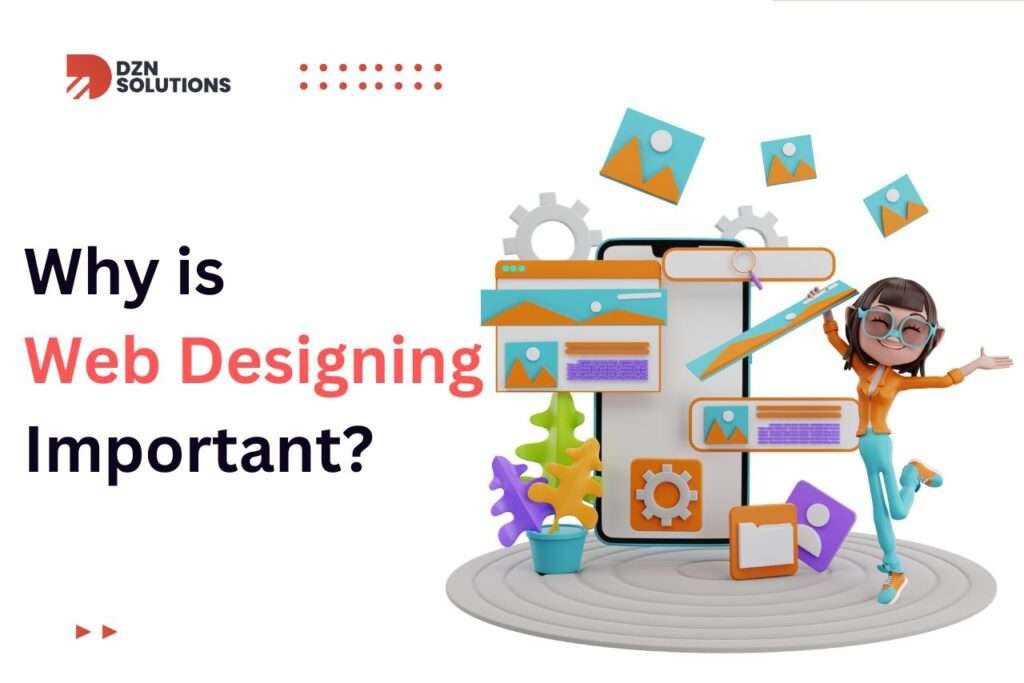Web developing or website development encompasses all work that goes into building a website. From the stages of conception to markup, coding to scripting, from configurations to content management system (CMS) development, everything is a vital component and stage of website development.
Ever since websites have become an integral part of everyone’s business and organization, knowing how to develop a website to get yours developed is only fair and equally beneficial; for you.
This guide covers web developing in-depth and takes you on a thorough ride from the first stage of the process till the very last. In this guide, we will learn about the whole process of website creation, and any additional resources that are required for making a website successful. So let us dive straight into it.
Why is web developing so important?
With over 4.7 billion global internet users, so the internet, no doubt, is the prime source of research, education, and entertainment in the world. With those numbers increasing at a rapid rate, it comes as no surprise that the web developing industry is only booming and expanding. In comparison to other tech developers, web developers are expected to see a further increase in demand.
First things first, let us delve into the basics of web development.
The basics of web development:
1. Coding:
Coding is a term that is used for referring to the written codes for applications and websites. The code is written through programming languages. These languages use vocabulary as well as punctuation to communicate with computers. Special commands sent through these coding languages are only understood and read by devices and programs. Coding and programming languages fall into two main categories. Front-end and back-end.
2. Front-end of the website:
The front end of the website refers to the side of the website that you see and interact with. When the information on the website is transferred from a server onto a browser, the front-end coding language is used. It allows the website to function smoothly without needing to continuously communicate with the internet. Front-end coding language also enables users to interact with the website, like playing videos, zooming images, selecting the text, and so on. This is also famous for the client-side development of the website.
3. The back end of the website:
The Back-end side of the website refers to the side of the website invisible to the user. It is the digital framework and infrastructure of the website. It is a mixture of numbers, letters, and symbols. Numerous coding languages are back-end programming languages, like HTML, CSS, and JavaScript.
4. Content Management System:
Content management system or CMS typically refers to an application or a series of programs that are used in the creation and management of web content. Wix and Squarespace are examples of content management systems. CMS is not mandatory in the creation of a website, but it makes things much easier. It provides various helpful plug-ins and add-ons that help with the structure of the website. Typically, content management systems are used for bogging and eCommerce.
5. Cybersecurity:
Cyber Security refers to the protection of data, networks, and computers from various kinds of threats that risk any private information, steal data, and also have the potential to crash servers. As hacking methods evolve and advance at a rapid rate, so do the security measures used to prevent hackers from hacking any precious or classified information on websites. Security audits are a crucial part of website maintenance to ensure there is no evident threat to the website.
After covering the basics, it is much easier to understand and explore the kinds of web development.
Kinds of web development:
1. Front-end Development:
In this kind of web development, the developers work on the client side of the websites, applications, programs, and software. This includes the web designing and visual elements of the website like the layout, navigation, color theme, design, graphics, images, animations, and other things. In this process of web developing, interfaces are built to facilitate the users to reach their goals.
2. Back-end Development:
This process of web developing involves the back side of the website, primarily the website infrastructure. It includes the system that is used for the website to function, like servers, operating systems, and databases. Security, content, and the structure of the website are also integral parts of back-end development.
3. Full Stack Development:
Full stack development of the website refers to both ends of the web developing process. This development includes creating the website from scratch and finishing it too.
4. Desktop Development:
Desktop development refers to building software applications that run locally on computers and devices even when not connected to the internet.
5. Mobile development:
This kind of development refers to building and creating mobile applications for devices like smartphones, tablets, and desktops. Mobile applications are different from the traditional website and run differently too. The programming languages are also different and special which makes the development process easier.
6. Game Development:
Game development requires code writing for video and console games, and computer and mobile games. This makes game development a field of its own altogether.
7. Security Development:
Security development is inventing and devising strategies to improve the security of software or a website. They are also famous as ethical hackers since they prevent hackers from getting into websites and disclosing vulnerabilities without intending to harm the website. Their purpose is to discover and eliminate any security risks.
Now, let us take a look at the whole web developing process in depth:
1. Plan:
Planning is the first step in everything, and similar is the case with the website. The first step is to create a website plan, then a team discussion to ensure that everyone is on the same page when it comes to constructing the website. Important things to keep in the discussion of the website can include the goal of the website, the expectations of the audience, the kind of website, the content and frequency of posting, the purpose of content and the structure of the website, the whole structure of the website, and navigational experience, and the most important thing – the budget for the website. It is best to get the web development team, marketing, and financial teams on board to discuss the goals, and prospects and determine the structure to move forward with the plan of the website.
2. Wireframe Creation:
Blueprint is the initial step of any website creation. Blueprint is also famous wireframes by developers. To put it simply, it is an initial version of the website that provides the direction and a starting point for the website. Dummy text and blank boxes are do use to understand how the material will appear on the website and to help you get a better idea of it.
3. Website Map:
A website map can assist you in understanding exactly what goals and objectives are with the website and will supply developers with the specific demands of your website. The website map can be created in association with the developers for a better and clearer understanding. It includes the pages needed, what content is needed, how to categorize the pages, how the pages are supposed to be linked together, and what needs to be removed from the website. The SEO team plays a vital role in this step of the web developing process, they can always pour in their valuable input on how to link pages together and also in categorize them.
4. Code the Website:
This step is the most important and lays down the foundation of the website. Different coding languages are options for different functionalities of the website like interactivity and design. They gel in together to make sure the website runs smoothly. The languages are:
-
- HTML – a hypertext markup language
- CSS
- JavaScript
5. Build the back end:
Sure, writing code is tough and complicated, and so is back-end development. But, equally necessary like coding. Building the back end of the website enables to build functionality and structure of the website.
6. Build the front end:
The front end, as discussed before, will enable the users to interact with the website smoothly, the more aesthetic it is, the better. This step of the web developing process uses JavaScript, HTML, and CSS. it includes essential aesthetic components like typography, fonts, navigation, responsiveness, and compatibility of the browser.
7. Get a Domain Name:
When your website has an IP address by now, it can never function without a domain name. You can purchase a domain name through providers that will enable you to use a domain for a year!
8. Launch:
This is the only step of the website that remains, so now the website is all set for launch!
Conclusion:
We have covered the whole process of web development and website creation in depth and now all you need to do is hire a great developer and get your website rolling!


